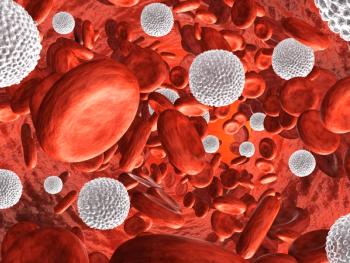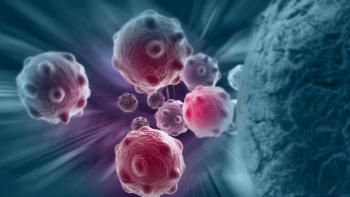
- Oncology Vol 28 No 4_Suppl_1
- Volume 28
- Issue 4_Suppl_1
(S037) Changes in Mass Transport as an Early Marker of Response to Cytotoxic Therapy in Human Pancreatic Adenocarcinoma
One clinical observation is that a decrease in tumor enhancement on CT scans after cytotoxic therapy is generally regarded as a good response. We hypothesized that measuring this phenomenon would correlate with local control of human pancreatic adenocarcinoma (PDAC).
Eugene J. Koay, MD, PhD, Vittorio Cristini, PhD, Priya Bhosale, MD, Mauro Ferrari, PhD, Jason B. Fleming, MD, Christopher Crane, MD; UT MD Anderson Cancer Center; Houston Methodist Research Institute
Background: Identifying a biomarker of local tumor response in pancreatic cancer has proven elusive, because the disease is usually unresectable, which limits the use of pathological response as a readout and because blood-based biomarkers, such as CA19-9, are not necessarily specific to local tumor control. One clinical observation is that a decrease in tumor enhancement on CT scans after cytotoxic therapy is generally regarded as a good response. We hypothesized that measuring this phenomenon would correlate with local control of human pancreatic adenocarcinoma (PDAC).
Methods: We developed an imaging-based biomarker using principles of mass transport. Using systematic measurements of density of pancreatic tissues at each of the timed phases of contrast-enhanced pancreatic protocol CT scans, we applied a mathematical model to derive a mass transport parameter that quantified the area under the enhancement curve (AUC) for patients with PDAC. We defined a “normalized AUC ratio” as the post-therapy AUC (4–8 weeks after treatment) divided by the pre-therapy AUC. This parameter was correlated with clinical outcome in patients treated on two prospective trials. The first trial originally included 48 patients with locally advanced PDAC treated with radiation to 50.4 Gy with concurrent bevacizumab and capecitabine. The second trial originally included 69 patients with locally advanced PDAC treated with induction cetuximab, gemcitabine, and oxaliplatin, followed by radiation to 50.4 Gy with concurrent cetuximab and capecitabine. A total of 84 patients (36 from Trial 1 and 48 from Trial 2) had both post-therapy and pre-therapy pancreatic protocol CT scans to analyze. The others did not have pancreatic protocol CT scans for one or either of the tests.
Results: There were 30 patients with clinical and radiographic evidence of local progression. The 2-year local control rate was 50% for all patients. We found that the normalized AUC ratio correlated significantly with local progression-free survival (PFS) (hazard ratio [HR] = 1.81; 95% confidence interval [CI], 1.01–3.03; P = .048). Furthermore, patients with a measureable decrease in tumor mass transport (normalized AUC ratio < 1) after chemoradiation had significantly better local control (86% with tumor control at 2 years) compared with those without a decrease in tumor mass transport (normalized AUC ratio ≥ 1; 34% with tumor control at 2 years; P = .002). As a continuous or discrete variable (with a cutoff of 1), the normalized AUC ratio correlated with local PFS, independent of therapy regimen, change in tumor size after therapy, and receipt of curative-intent surgery.
Conclusions: After cytotoxic therapies, decreased enhancement in human PDAC tumors correlated with improved local control. This phenomenon can be quantified using our systematic methodology and mathematical model. With further validation, this method may serve as an early readout of response to new therapies, which could help accelerate promising treatments and enable rational management decisions. Ongoing work will address the hypothesis that a decrease in tumor enhancement correlates with pathological response for patients who have resectable PDAC and receive neoadjuvant cytotoxic therapy.
Proceedings of the 96th Annual Meeting of the American Radium Society -
Articles in this issue
Newsletter
Stay up to date on recent advances in the multidisciplinary approach to cancer.

















































































